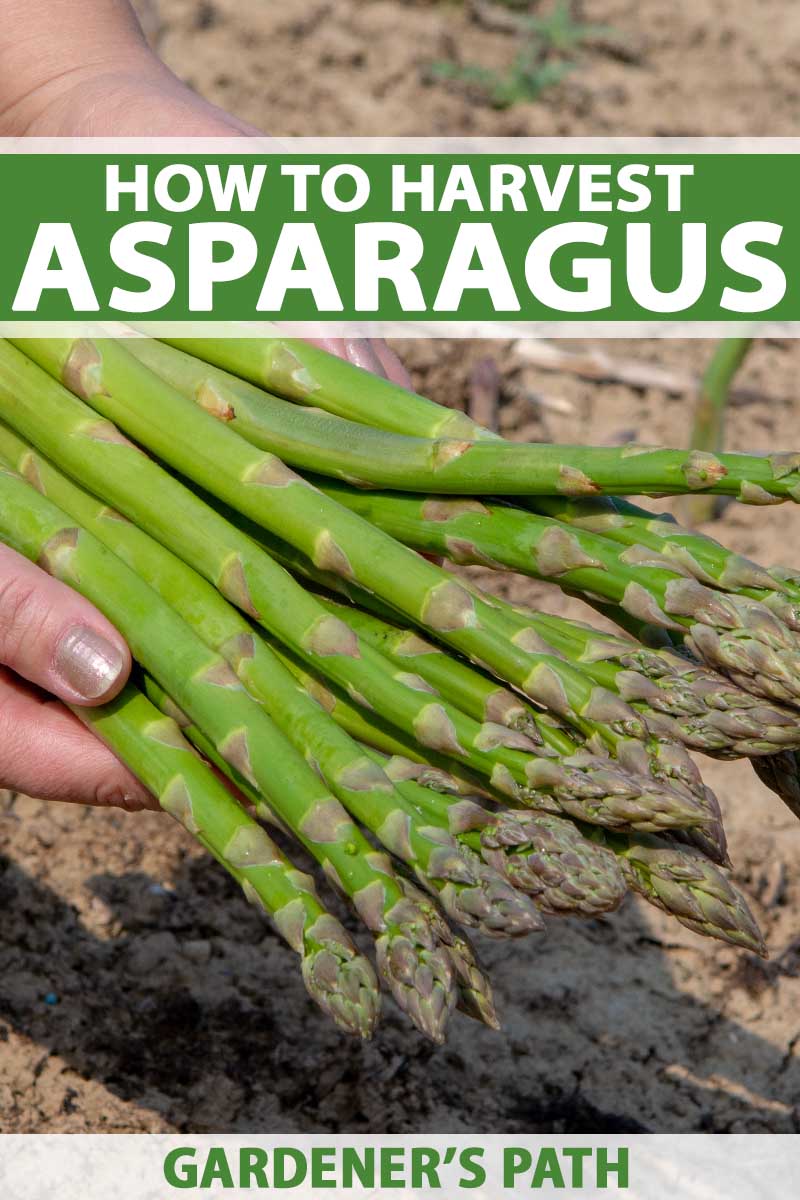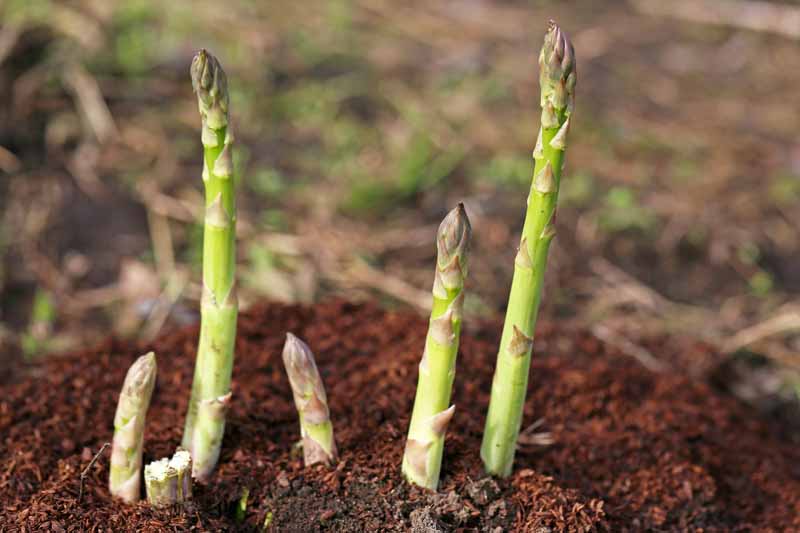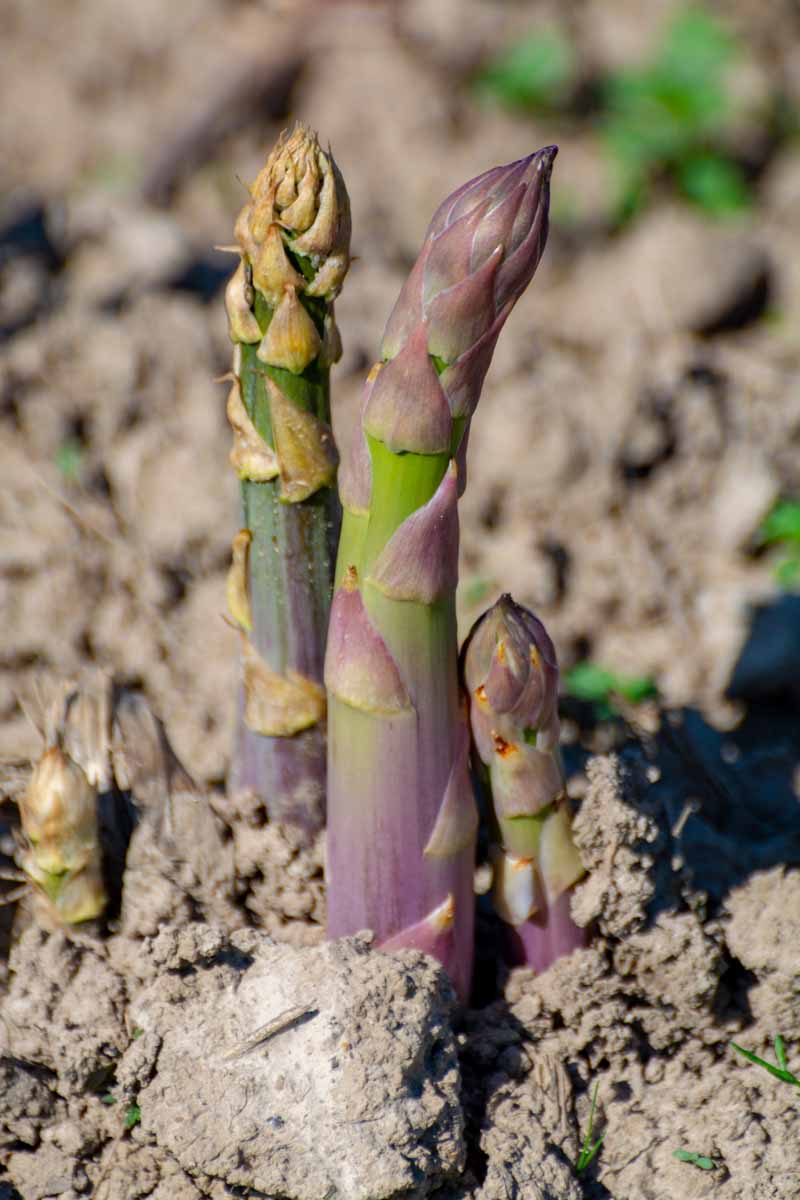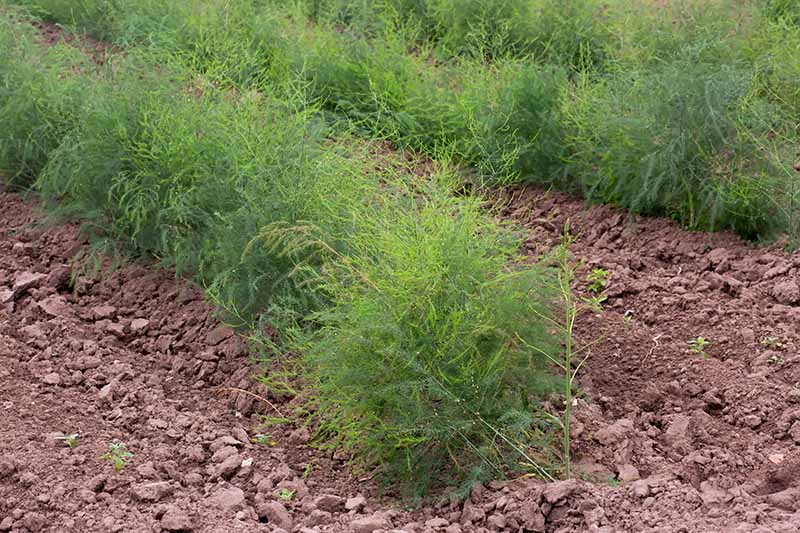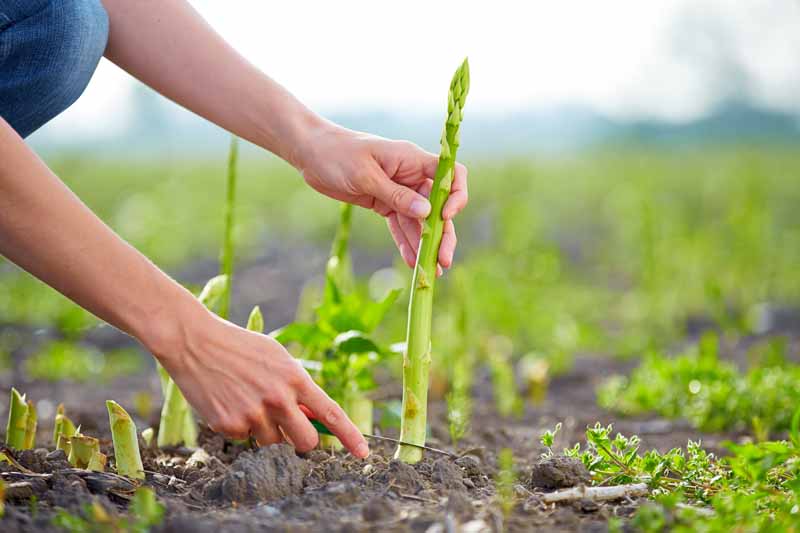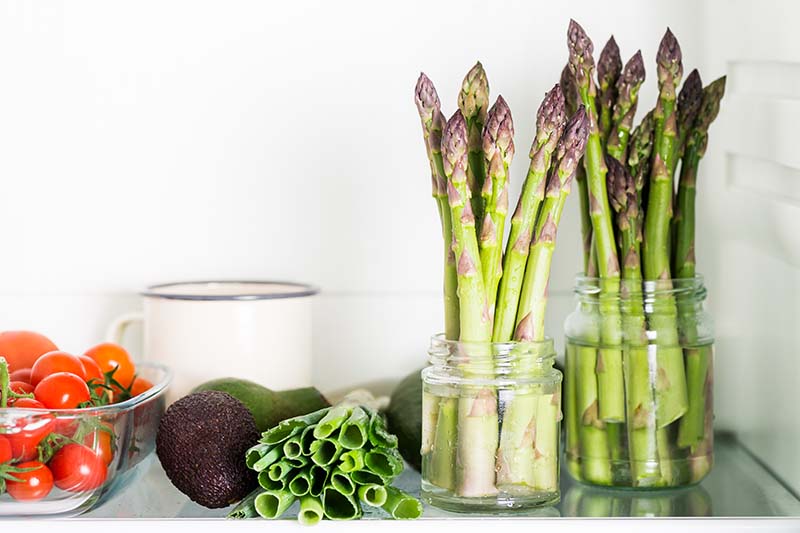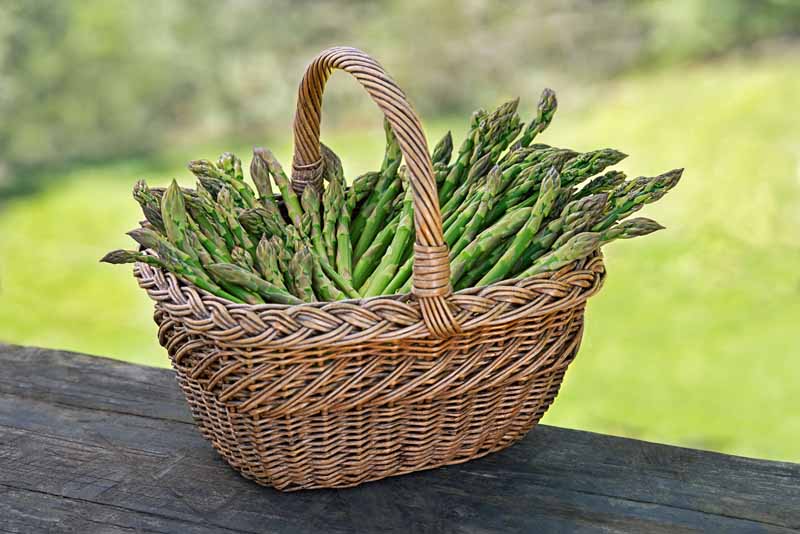Not only is it incredibly crisp and delicious when fresh, but it is one of the rare perennial vegetables that, when cared for and picked appropriately, will continue to produce bountiful harvests for years. We link to vendors to help you find relevant products. If you buy from one of our links, we may earn a commission. So how do you know when and how to harvest asparagus to ensure a continued crop? Read on to learn more! Our first harvest marked the third summer in our home. And for our family, this was a milestone worth celebrating. With the annual promise of garden-grown asparagus, we knew we were here to stay. Now, when spring arrives I make a point to peek in at my little asparagus patch each morning, waiting impatiently for those first little spears to poke out of the ground.
When to Harvest
The key to a healthy and long-yielding asparagus patch – and in my opinion the biggest challenge – is to wait until the third season to harvest. While you will notice tempting looking spears poking out of the ground during the first and second years, you should restrain yourself from picking them. Since it takes a few seasons for the root systems to become really well established, harvesting during these first couple of years will risk stunting or even killing the plants. If you are really tempted, it is probably okay to taste test a stalk or two on each plant in the second year… but keep this to a minimum if you can help it. Trust me, it is worth the wait! With proper care and patience, by the third season they will produce a full crop that will last for a month or more, and continue producing each year after that for at least 15 years. Once you reach that momentous third season, and plants are finally ready for a full harvest, you can pick daily as soon as spears start to appear in spring. Harvest as soon as they are tall enough and before the tips of the buds start to open. They should be about half to three quarters of an inch thick, and between six and 10 inches in length. But don’t wait much longer! Stalks can grow quickly on warm days, and if you forget to harvest, they will quickly mature to form fronds about four to six feet tall. You should stop picking the stalks once they decrease in diameter to about the size of a pencil, at which point you should just let any new ones fern out and try to wait patiently until next year!
How to Harvest
The best time to harvest is in the morning, or in early evening. Simply pinch a spear with your thumb and forefinger and bend until it snaps. You can also use a clean knife or scissors, cutting just above the soil line. The stub left behind will eventually disintegrate, causing no harm to the plant. While some gardeners prefer to cut below the soil line with a knife, be aware that this could lead to accidental cutting of emerging stalks nearby if you aren’t careful. If you notice a decrease in production or plants start to look stressed, stop harvesting, and allow the fronds to grow to store energy for the following season. For more information on planting and growing asparagus, check out our comprehensive guide.
Storage
Spears will keep for up to two weeks in the fridge if stored correctly. Keep them bundled with tips facing the same direction, and place in a plastic bag in the crisper drawer. You can sprinkle a little water on the cut end just before refrigerating to reduce the risk of dehydration. Some recommend that spears maintain the freshest taste if you stand them up in a glass jar filled with about an inch of water and loosely cover them with plastic. Replace the water when it becomes cloudy and store for up to a week in the fridge, preferably using them up before they begin to lose their crispness. You can also freeze them for long term storage. You will first want to blanch the spears, to help maintain color and texture. Bring a pot of water to a boil and toss in the asparagus. Depending on your preference, you can freeze spears whole, or cut them into one or two-inch pieces. Boil for two to five minutes, depending on thickness, and immediately transfer into a bowl of ice cold water to stop the cooking process. Spread the asparagus on a single layer on a baking sheet and freeze for a couple of hours to prevent them from sticking together. Once frozen, you can transfer them into dated and labeled freezer bags or containers. Use within a year.
Recipes and Cooking Ideas
Fresh asparagus adds a really special touch to springtime meals! It is incredible in stir fries, on pizza, or simply roasted as a side dish. I’ll admit, I even love to eat the spears raw right out of the garden! Fancy up your pasta night with this mouthwatering asparagus and balsamic rigatoni recipe from our sister site, Foodal. Topped with a little grated parmesan and some fresh herbs, this dish is a perfect way to celebrate spring! Or for cool spring evenings, whip up a fresh cream of asparagus soup. This recipe from Foodal is delightfully yummy with just a hint of lemon. And the wonderfully green color just adds to the fun. When the weather turns warm, one of my favorite activities is enjoying a slow breakfast on the porch with my coffee. This recipe, also from Foodal, for an asparagus and mozzarella French omelet is perfect for a leisurely springtime weekend meal. With just a little patience, you can celebrate the return of spring with an abundant harvest for many seasons. Do you have tips for harvesting and storing asparagus? Please share your experience in the comments below! Looking for more asparagus growing tips? Check out these articles to learn more about growing a healthy and productive crop:
How to Identify and Treat Asparagus Crown and Root RotWhat’s the Difference Between Male and Female Asparagus Plants?Cutting Asparagus Foliage Back in Autumn
